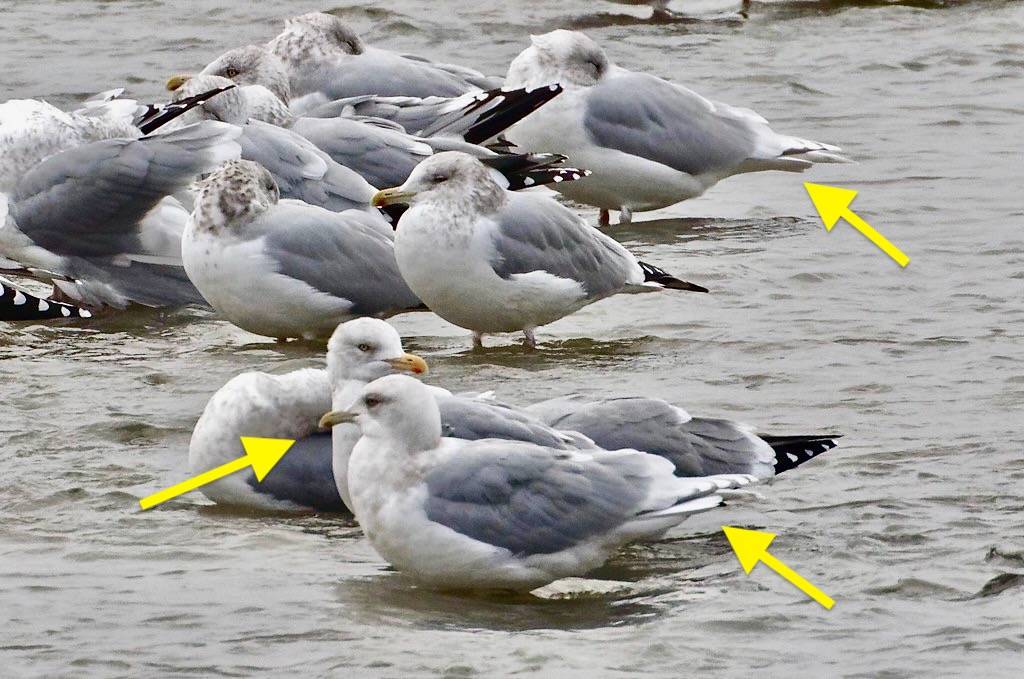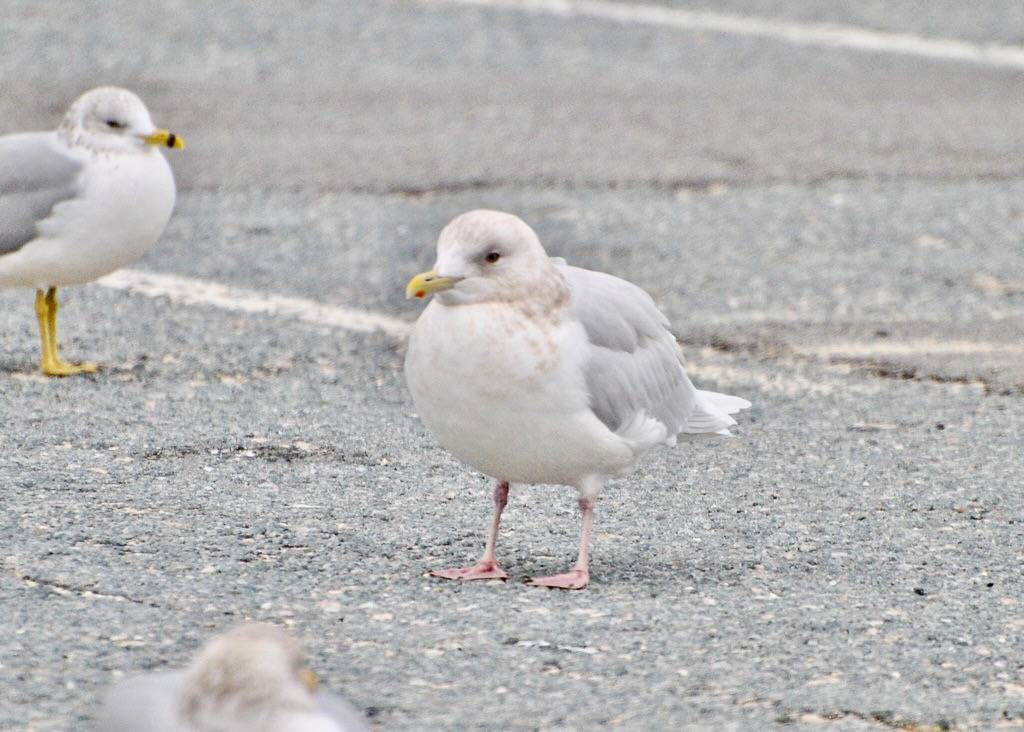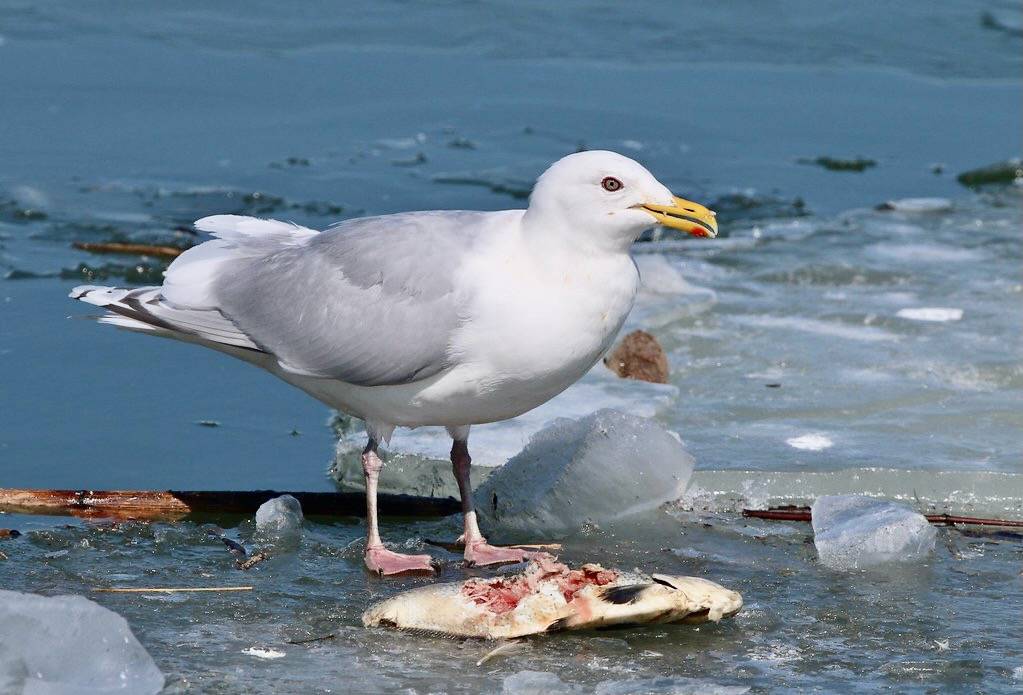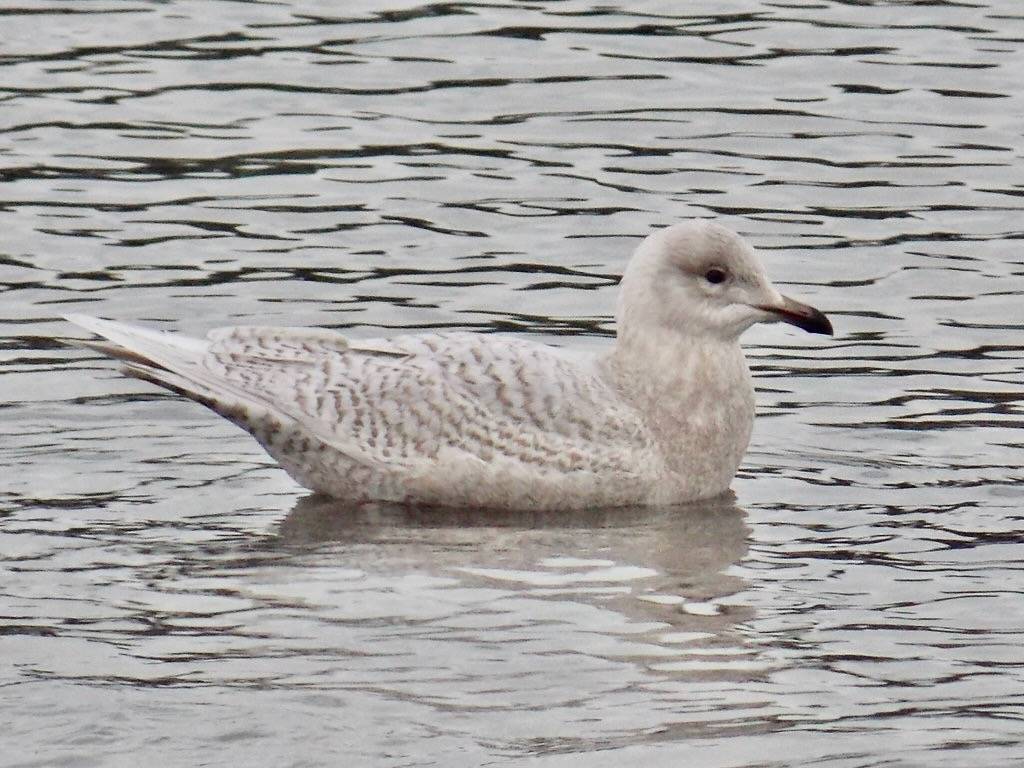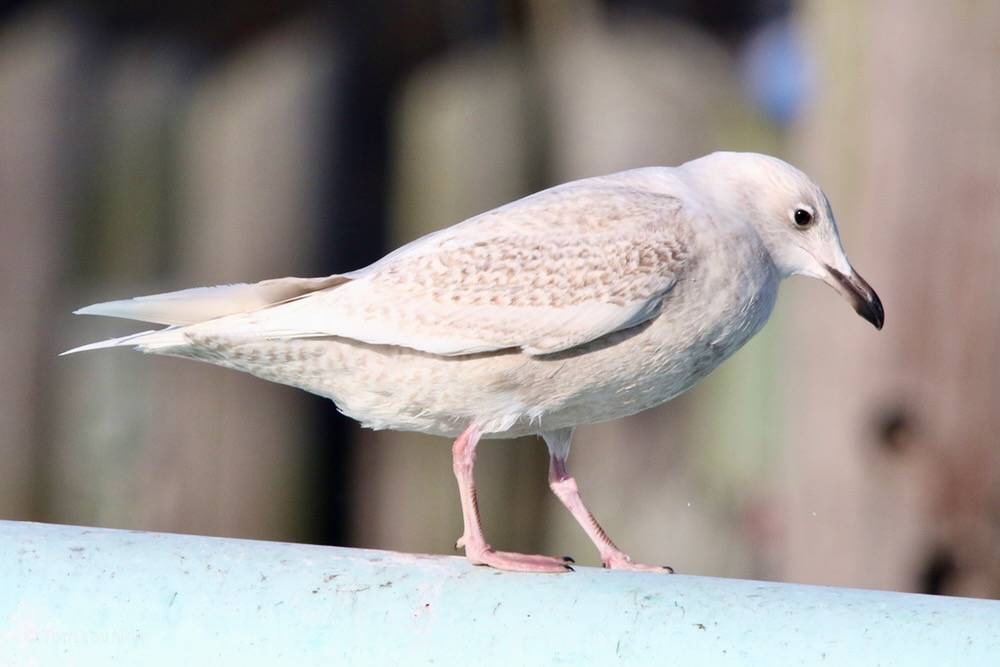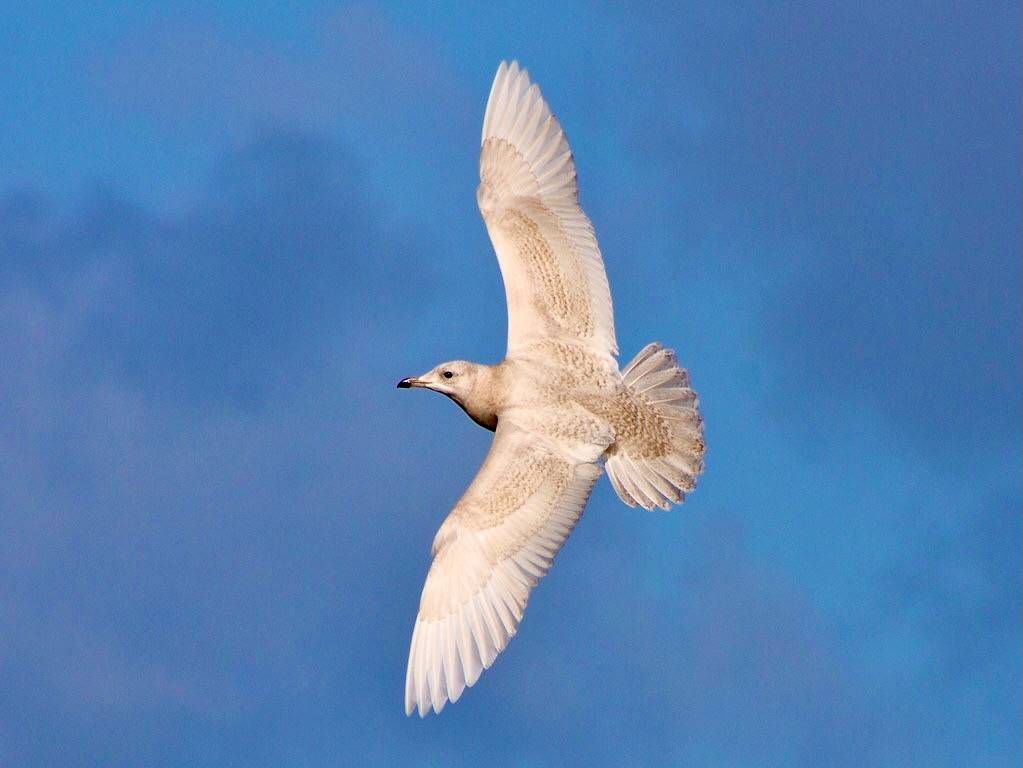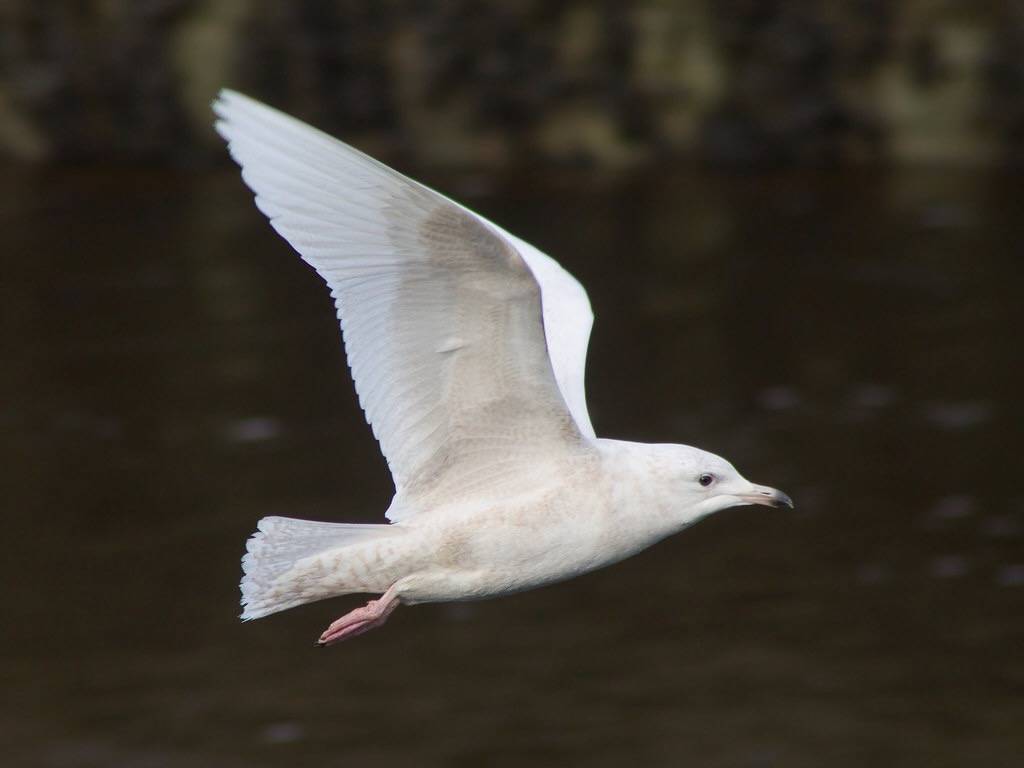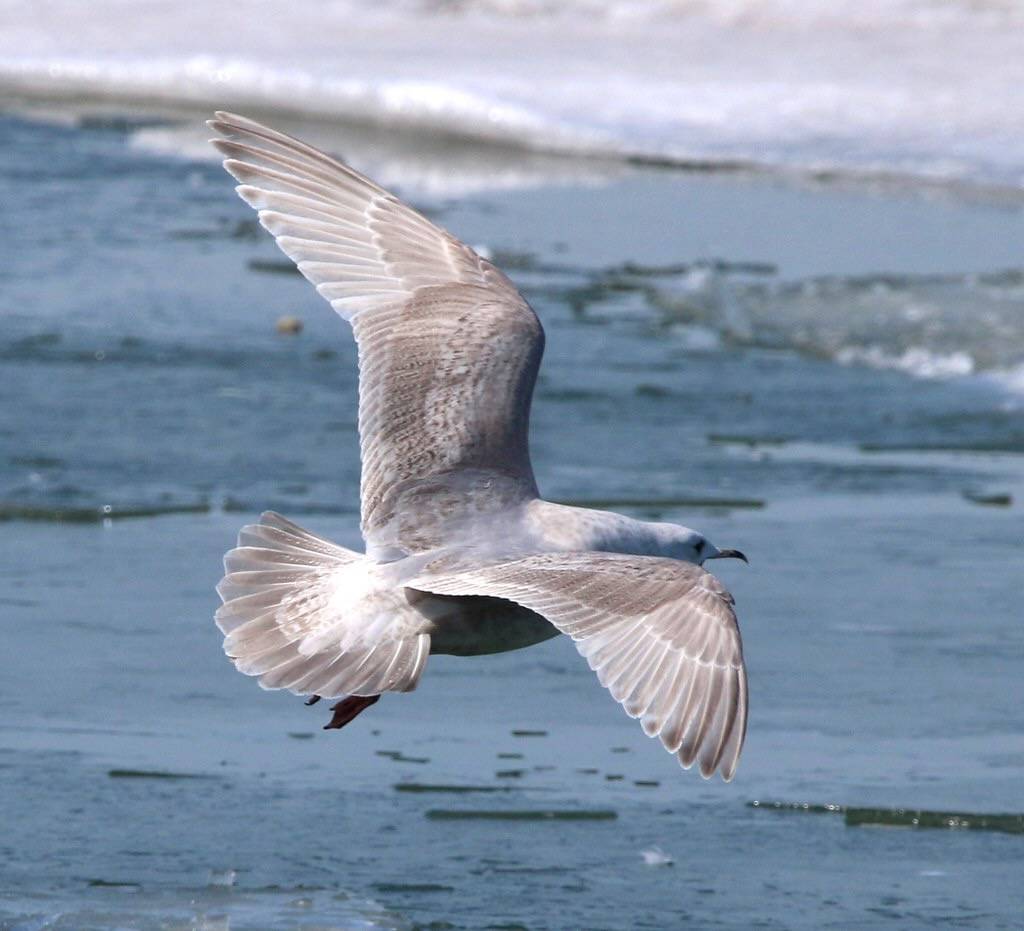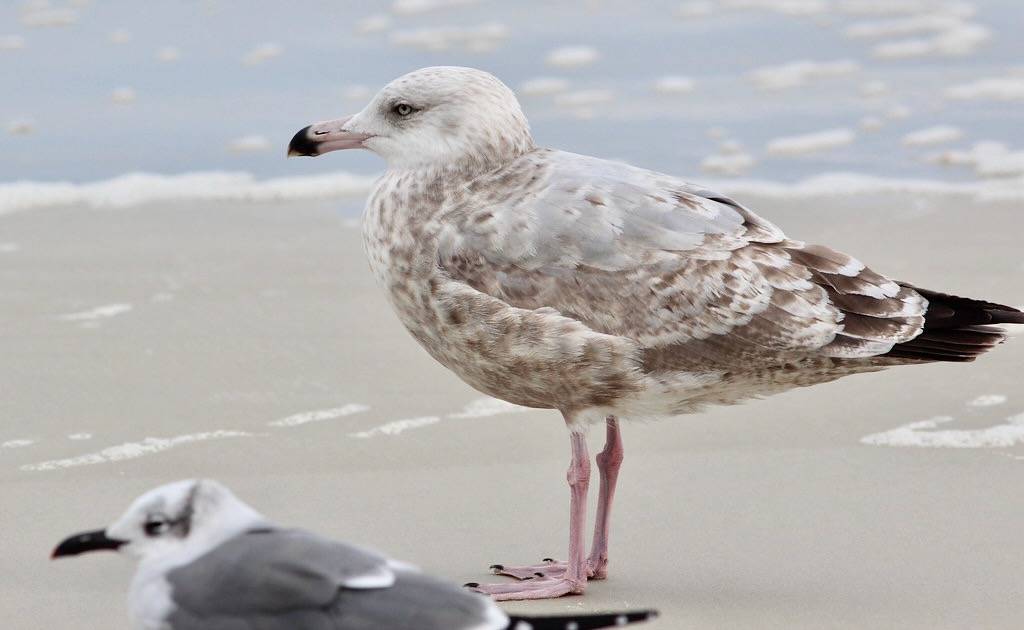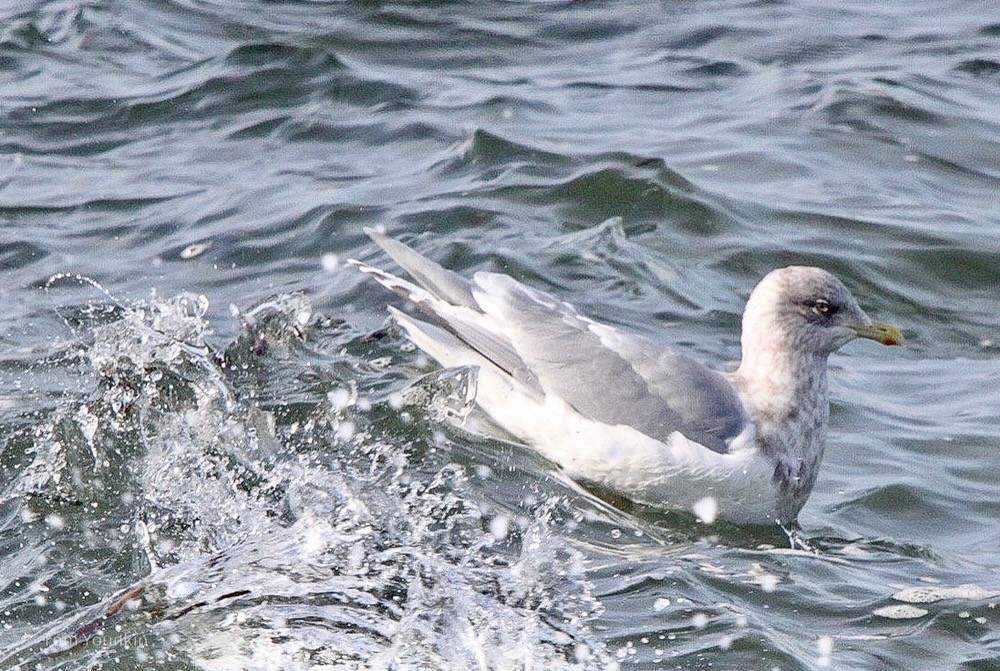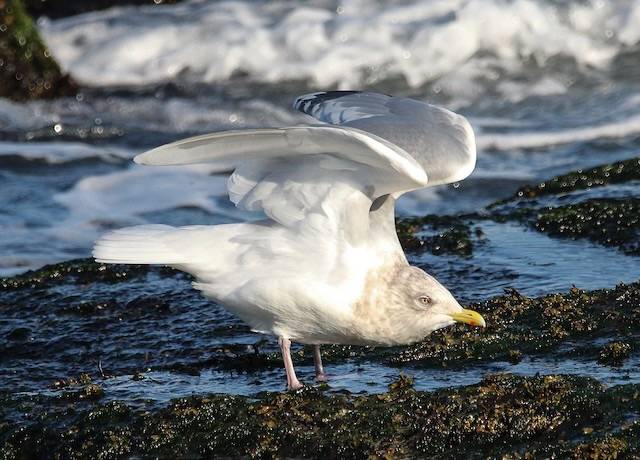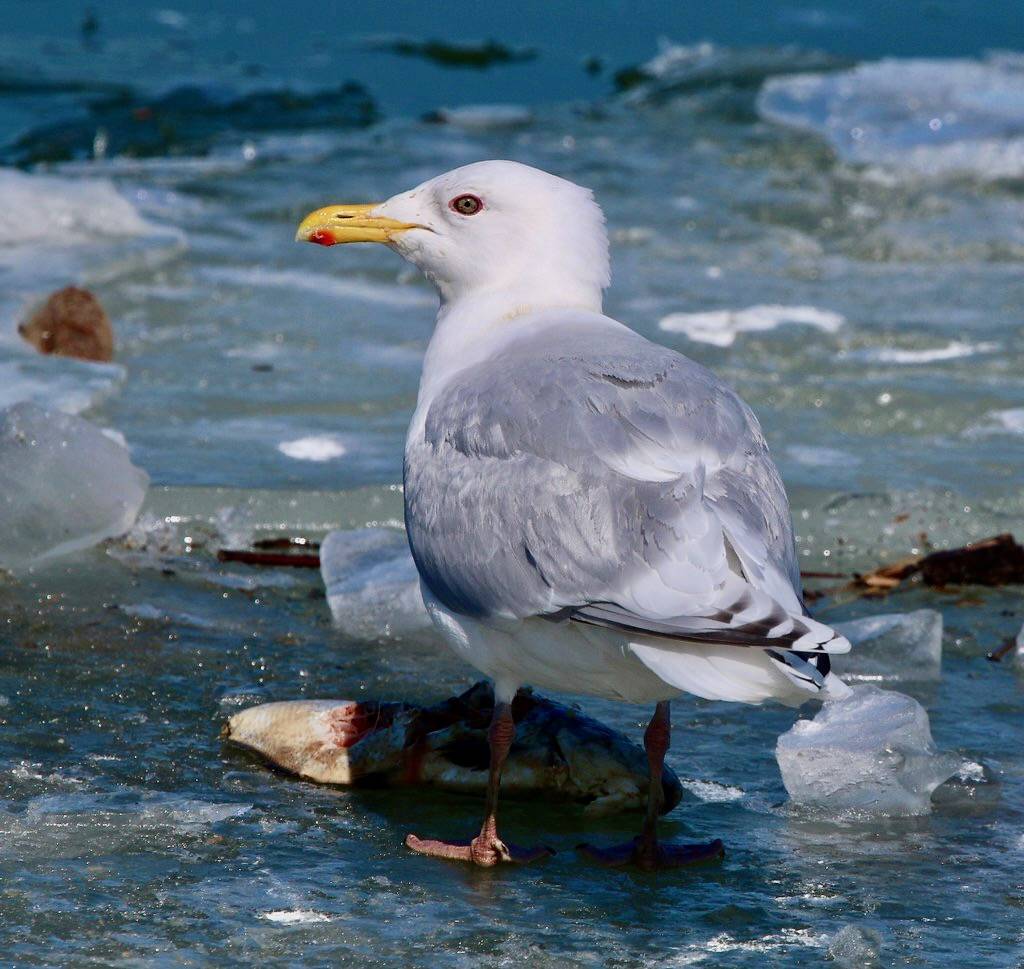Iceland Gull
The Iceland Gull is a rare winter visitor to Salter Grove and has only been recorded four time between 2002 and 2022. Look for a medium-sized gull with light upperparts among the flocks of other gulls in North Cove, or on the northern arm of the breakwater.
Slightly smaller than the more familiar Herring Gull, it has a smaller bill and a smaller, rounded head to result in almost a dove-like profile. Its plumage is extremely variable in both juveniles and adults, with the palest form in the eastern part of its range grading into the darkest form in the west.
Much like other gull species, the Iceland Gull is omnivorous. It forages for fish, mollusks and other marine invertebrates, but will also scavenge near fish processing plants, dump sites and land fills. It is admired for the grace and ease with which it plucks food items from the surface of the water with nary a splash.
Despite its name, it breeds in the high arctic of Canada and Greenland, and only visits Iceland in the winter months. Colonies of up to 100 nests line narrow rock ledges overlooking steep coastal inlets. Compared to other gulls, its reproductive biology is poorly known because of the remoteness of its breeding grounds.
Most sightings of Iceland Gull have been of birds wintering along the Atlantic and Pacific coasts of subarctic and temperate North America. Birds that breed in Greenland regularly winter in the coastal waters of Northern Europe.
For those interested in how birds are organized into species, some of the following links explain how taxonomists combined populations of the Iceland Gull and Thayer's Gull into one gull species with three subspecies.
For more information:
https://www.allaboutbirds.org/guide/Iceland_Gull
https://www.audubon.org/field-guide/bird/iceland-gull
https://www.oiseaux-birds.com/card-iceland-gull.html
https://www.birdspot.co.uk/bird-identification/iceland-gull
https://en.wikipedia.org/wiki/Iceland_gull
https://en.wikipedia.org/wiki/Thayer's_gull
https://en.wikipedia.org/wiki/Kumlien%27s_gull
https://www.eastsideaudubon.org/corvid-crier/2020/1/28/iceland-gull

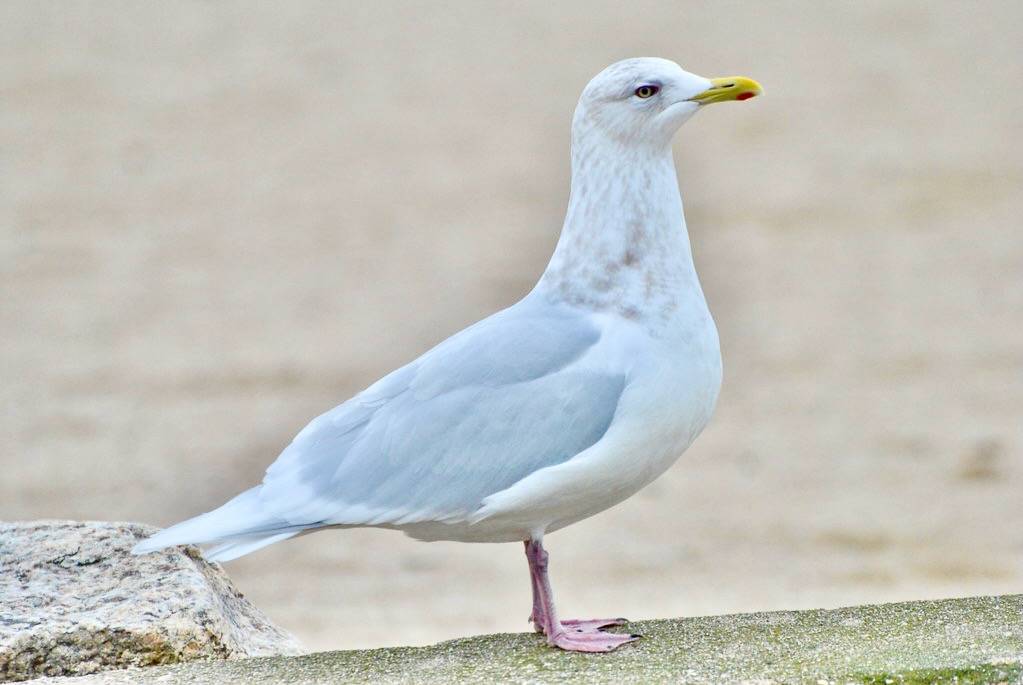
.jpeg?w=350?blur=10)

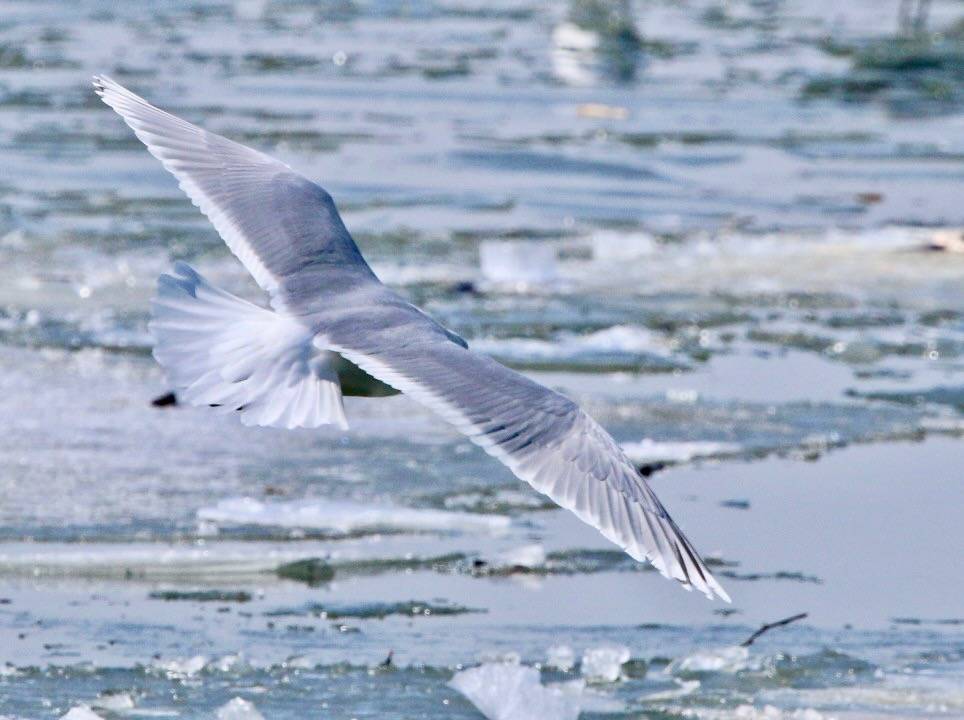
 nonbreeding 12oct17 Glaucous-winged behind.jpeg?w=350?blur=10)
